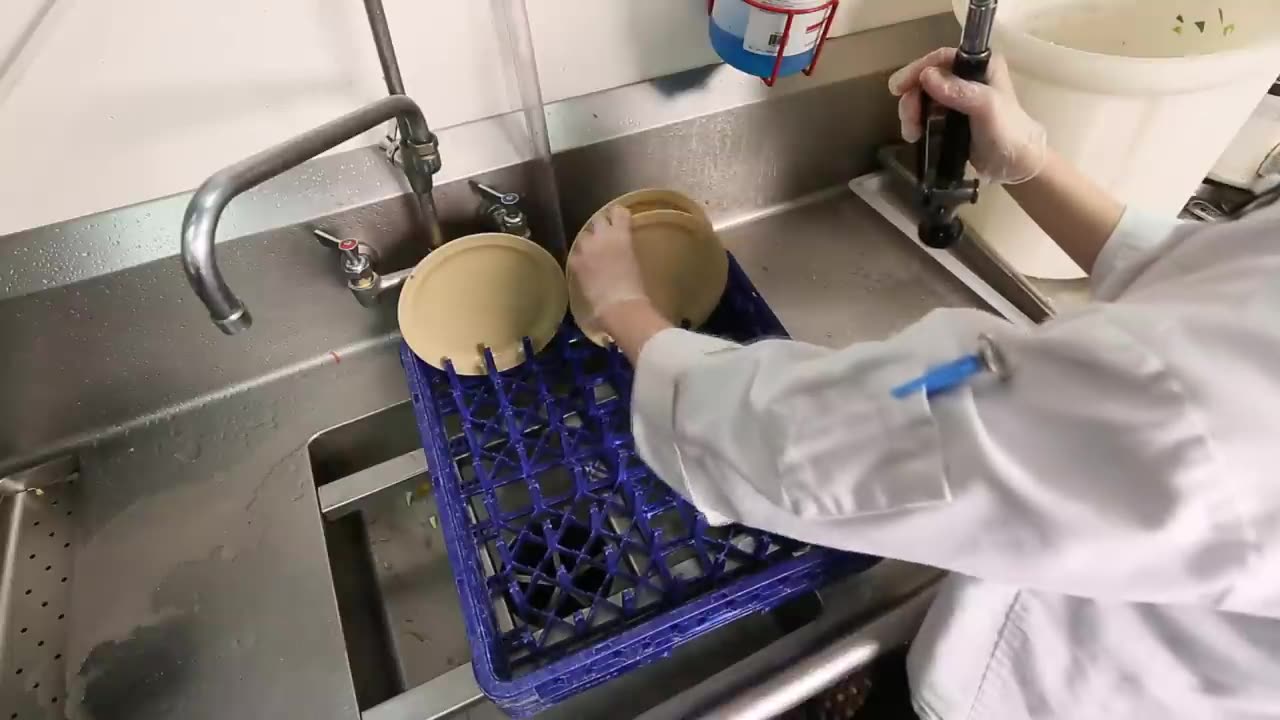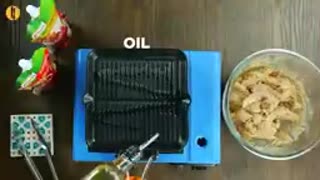Premium Only Content

Basic Food Safety_ Chapter 5 _Cleaning and Sanitizing_ (English)
### **Basic Food Safety: Chapter 5 - Cleaning and Sanitizing**
---
#### **The Importance of Cleaning and Sanitizing**
Proper cleaning and sanitizing are essential to maintaining food safety by eliminating harmful microorganisms and preventing foodborne illness. It ensures a safe environment for food preparation and service.
---
#### **Definitions**
- **Cleaning:** Removing dirt, food residue, and other debris from surfaces using soap or detergent and water.
- **Sanitizing:** Reducing bacteria and other pathogens on surfaces to safe levels using heat or chemical agents.
---
#### **The Cleaning and Sanitizing Process**
1. **Pre-Cleaning:**
- Remove loose food particles and debris by scraping or wiping.
- Rinse with clean water.
2. **Washing:**
- Use hot water (at least **110°F or 43°C**) and detergent to scrub surfaces.
- Focus on hard-to-reach areas where debris may accumulate.
3. **Rinsing:**
- Rinse thoroughly with clean water to remove soap or detergent residue.
4. **Sanitizing:**
- Apply a sanitizer solution or use heat (e.g., hot water at **171°F or 77°C** or higher for manual sanitizing).
- Follow manufacturer instructions for chemical sanitizers (e.g., chlorine, iodine, quaternary ammonium).
5. **Air Drying:**
- Allow items to air dry completely to prevent recontamination. Avoid using towels.
---
#### **When to Clean and Sanitize**
- **After Each Use:** Clean utensils, cutting boards, and equipment after handling raw food.
- **Between Tasks:** When switching between raw and ready-to-eat foods.
- **Every 4 Hours:** For surfaces in constant use.
- **At Day’s End:** Thoroughly clean and sanitize all areas after closing.
---
#### **Sanitizing Methods**
**1. Heat Sanitizing:**
- Immerse items in hot water at **171°F (77°C)** or above for at least 30 seconds.
- Use dishwashers that reach sanitizing temperatures.
**2. Chemical Sanitizing:**
- Chlorine: 50-100 ppm (parts per million), contact time: 7 seconds.
- Iodine: 12.5-25 ppm, contact time: 30 seconds.
- Quaternary Ammonium (Quats): Concentration as specified, contact time: 30 seconds.
---
#### **Maintaining Cleanliness in the Workplace**
- **Cleaning Schedules:** Develop and follow a daily and periodic cleaning checklist.
- **Proper Storage:** Store cleaning supplies away from food prep areas to avoid contamination.
- **Use Appropriate Tools:** Use brushes, scrapers, and cloths designated for specific tasks to avoid cross-contamination.
---
#### **Common Mistakes to Avoid**
1. Using dirty or contaminated cleaning tools.
2. Skipping the rinsing step, leaving detergent residues.
3. Allowing sanitized surfaces to come into contact with unclean materials.
---
#### **The Role of Staff Training**
Ensure all employees:
- Understand the difference between cleaning and sanitizing.
- Know how to prepare and use cleaning and sanitizing solutions safely.
- Follow established protocols and schedules.
---
By adhering to proper cleaning and sanitizing procedures, you can maintain a safe and hygienic environment, protecting both staff and customers from food safety hazards. Let me know if you'd like more details!
-
 1:35
1:35
HSESafetyInformation
6 months agoMutton Chops two ways- baked & grilled Recipe by Food Fusion (Eid Recipe)
67 -
 LIVE
LIVE
Geeks + Gamers
2 hours agoGeeks+Gamers Play- MARIO KART WORLD
231 watching -
![(8/27/2025) | SG Sits Down Again w/ Sam Anthony of [Your]News: Progress Reports on Securing "We The People" Citizen Journalism](https://1a-1791.com/video/fww1/d1/s8/6/G/L/3/c/GL3cz.0kob.1.jpg) 29:34
29:34
QNewsPatriot
3 hours ago(8/27/2025) | SG Sits Down Again w/ Sam Anthony of [Your]News: Progress Reports on Securing "We The People" Citizen Journalism
3.08K1 -
 25:12
25:12
Jasmin Laine
7 hours agoDanielle Smith’s EPIC Mic Drop Fact Check Leaves Crowd FROZEN—Poilievre FINISHES the Job
3.68K16 -
 LIVE
LIVE
ZWOGs
11 hours ago🔴LIVE IN 1440p! - SoT w/ Pudge & SBL, Ranch Sim w/ Maam & MadHouse, Warzone & More - Come Hang Out!
54 watching -
 LIVE
LIVE
This is the Ray Gaming
54 minutes agoI'm Coming Home Coming Home Tell The World... | Rumble Premium Creator
33 watching -
 LIVE
LIVE
GrimmHollywood
10 hours ago🔴LIVE • GRIMM HOLLYWOOD • GEARS OF WAR RELOADED CUSTOMS • BRRRAP PACK •
44 watching -
 1:13:28
1:13:28
Glenn Greenwald
4 hours agoGlenn Takes Your Questions on the Minneapolis School Shooting, MTG & Thomas Massie VS AIPAC, and More | SYSTEM UPDATE #506
99.4K46 -
 LIVE
LIVE
RCAM
1 hour agoLIVE | Trans Shooter Who Targeted Christians | Premium Creator
42 watching -
 LIVE
LIVE
Spartan
5 hours agoMaybe finishing Expedition 33, then back to Halo Grind
11 watching